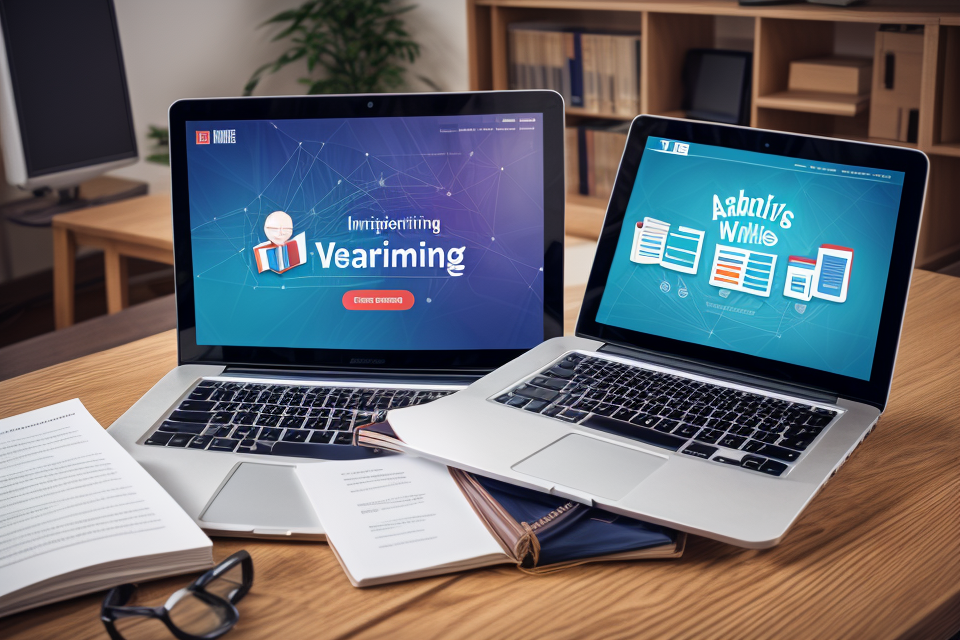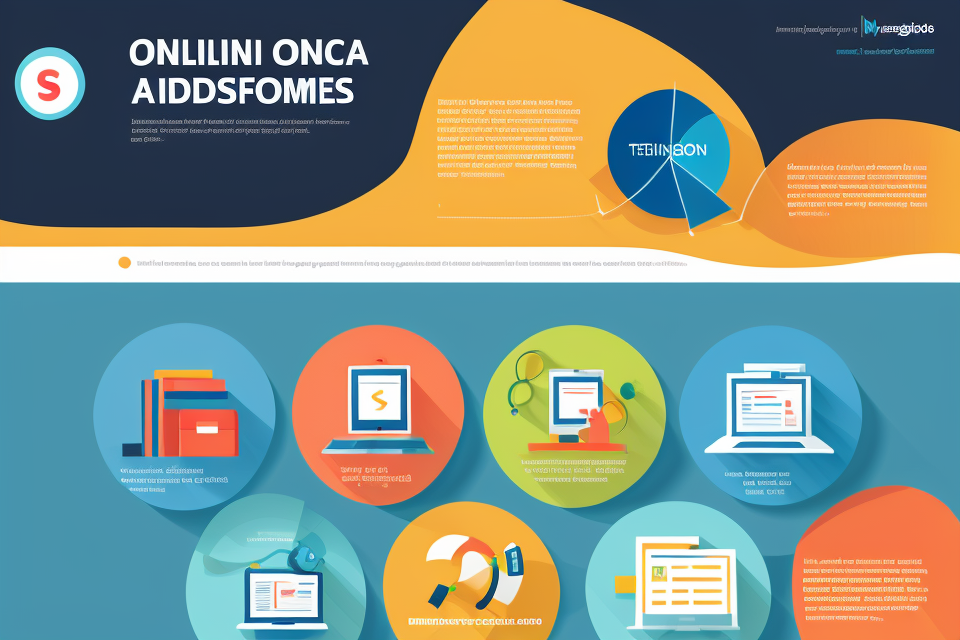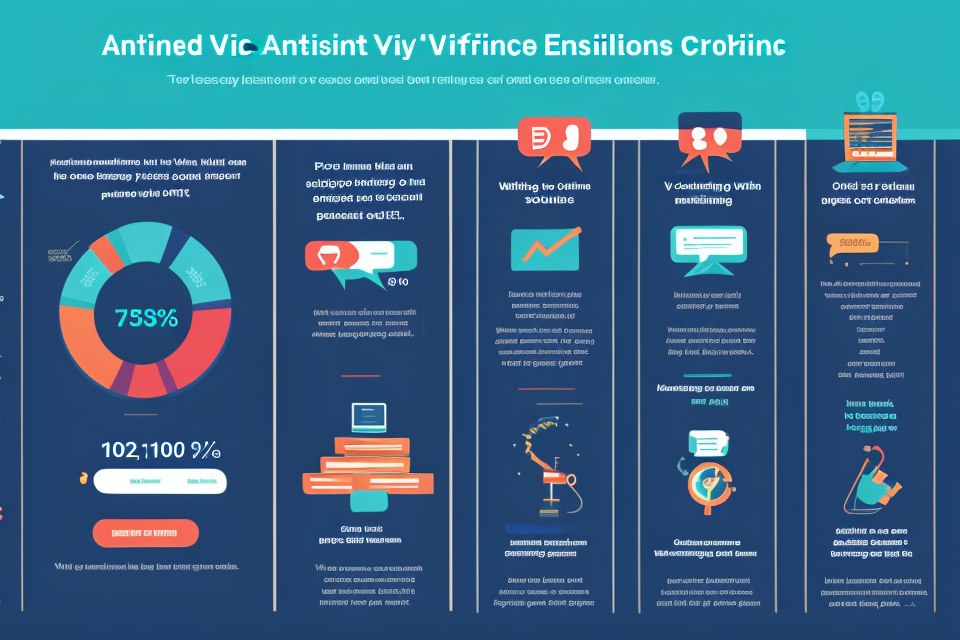
In today’s digital age, online courses have become an increasingly popular mode of education. With the convenience of learning from anywhere and at any time, it’s no wonder that more and more people are turning to online courses to expand their knowledge and skills. But what exactly counts as an online course? Is it the same as an online degree program? Can any course be offered online? In this comprehensive guide, we will explore the various aspects of online courses and provide a clear understanding of what counts as an online course. Whether you’re a student, a teacher, or simply a curious learner, this guide will give you a solid foundation in the world of online education. So, let’s dive in and discover the exciting world of online courses!
Understanding Online Courses
Definition of an Online Course
An online course is a learning experience that is delivered via the internet. It allows students to access course materials, interact with instructors and peers, and complete assignments and assessments remotely.
- Criteria for an online course
- Course content is delivered online
- Students have some level of autonomy in completing coursework
- There is some level of interaction between students and instructor
- Assessments and evaluations are a component of the course
- Types of online courses
- Self-paced courses
- Instructor-led courses
- Hybrid courses (combination of online and in-person components)
- Massive Open Online Courses (MOOCs)
Benefits of Online Courses
Flexibility
One of the most significant advantages of online courses is the flexibility they offer. With online learning, students can access course materials and complete assignments at any time, from any location with an internet connection. This means that students can balance their studies with work, family obligations, or other commitments, without having to compromise on their education.
Accessibility
Online courses also offer a high level of accessibility, as they are available to anyone with an internet connection, regardless of their location. This means that students who may not have access to traditional brick-and-mortar institutions can still receive a high-quality education. Additionally, online courses often cater to students with disabilities, providing closed captioning, transcripts, and other accommodations to ensure that all students can participate fully.
Affordability
Online courses are often more affordable than traditional campus-based courses, as they do not require the same level of overhead costs. This means that students can save money on things like transportation, housing, and textbooks. Additionally, many online courses offer competitive pricing, making them accessible to students on a budget.
Personalized learning
Online courses offer a high level of personalization, as students can learn at their own pace and choose the materials that best suit their learning style. This means that students can focus on the areas where they need the most help, and can move quickly through the material that they already understand. Additionally, online courses often offer a high level of interaction with instructors and peers, allowing students to receive personalized feedback and support.
Key Components of an Online Course
Course Content
The course content refers to the material that learners engage with during an online course. This material includes various components that help learners achieve the course’s learning objectives.
- Learning objectives: These are specific, measurable, and attainable goals that learners aim to achieve by the end of the course. They provide a clear roadmap for learners and help them understand what they are expected to learn.
- Lesson plans: These are detailed outlines of each lesson or module within the course. They typically include learning objectives, instructions for delivering the content, and assessment strategies. Lesson plans help instructors organize and deliver course content effectively.
- Interactive materials: These are resources that allow learners to interact with the course content in a more dynamic way. Examples include videos, simulations, quizzes, and discussion forums. Interactive materials help learners retain information better and apply it in practical situations.
- Assessments: These are evaluations that measure learners’ understanding of the course material. Assessments can take various forms, such as multiple-choice questions, short answer questions, essays, or practical exercises. Assessments help learners gauge their progress and identify areas that need improvement.
Instructional Methods
- Self-paced courses
- Self-paced courses allow students to learn at their own pace, without the need for instructor guidance or supervision.
- Students can access course materials and complete assignments on their own schedule, making it a convenient option for those with busy schedules or who live in different time zones.
- Examples of self-paced courses include MOOCs (Massive Open Online Courses) and e-learning platforms that offer a wide range of subjects.
- Instructor-led courses
- Instructor-led courses involve a teacher or instructor who guides students through the course material.
- These courses often follow a set schedule, with specific deadlines for assignments and exams.
- Instructor-led courses can be delivered through video conferencing software, discussion boards, or email communication.
- Examples of instructor-led courses include online college courses and professional development programs.
- Blended learning
- Blended learning combines traditional classroom instruction with online learning.
- Students attend some classes in person and complete other coursework online.
- Blended learning can provide a more flexible and personalized learning experience, while still offering the benefits of face-to-face interaction with instructors and peers.
- Examples of blended learning include hybrid courses that meet once a week in person and online discussions and assignments.
- Social learning
- Social learning emphasizes the importance of collaboration and interaction with others in the learning process.
- Students work together on projects, discuss ideas, and provide feedback to one another.
- Social learning can be facilitated through online discussion boards, group projects, and video conferencing software.
- Examples of social learning include online communities of practice and collaborative online learning environments.
Technical Requirements
When it comes to online courses, technical requirements play a crucial role in ensuring that the course runs smoothly and is accessible to all learners. The following are some of the technical requirements that must be considered when designing and delivering an online course:
Computer Hardware
The first technical requirement for an online course is a computer with sufficient hardware specifications. This includes a processor, memory, storage, and a display screen. The processor should be fast enough to handle multimedia content, while the memory should be large enough to store the course materials and run the LMS. The storage should be sufficient to store all the course files, while the display screen should have a high resolution to ensure that the course materials are clear and easy to read.
Internet Connectivity
Another critical technical requirement for an online course is a reliable internet connection. This is because online courses rely heavily on the internet to deliver course materials, conduct assessments, and facilitate communication between learners and instructors. A slow or unreliable internet connection can disrupt the learning process and make it difficult for learners to participate in online discussions or submit assignments on time.
Learning Management System (LMS)
A learning management system (LMS) is a software application that enables instructors to deliver, manage, and track online courses. The LMS is the backbone of any online course, and it provides a platform for instructors to upload course materials, conduct assessments, and track learner progress. The LMS should be user-friendly, reliable, and accessible to all learners, regardless of their technical proficiency.
In addition to these technical requirements, it is also essential to consider accessibility requirements when designing and delivering an online course. This includes ensuring that the course is accessible to learners with disabilities and that the course materials are culturally sensitive and relevant to the learners’ backgrounds. By considering these technical and accessibility requirements, instructors can create an online course that is engaging, accessible, and effective for all learners.
Accreditation and Credentials
Accreditation
Definition and Importance
Accreditation refers to the process of evaluating and granting recognition to educational institutions or programs that meet specific standards and criteria. It serves as a guarantee of quality and consistency in education, ensuring that students receive a high-quality education that is recognized and respected by employers, peers, and other educational institutions. Accreditation is essential for online courses, as it helps students and employers assess the credibility and value of the education received.
Accreditation Bodies
Accreditation bodies are organizations responsible for granting accreditation to educational institutions and programs. They typically evaluate the institution’s mission, governance, curriculum, faculty qualifications, student support services, and resources. Examples of accreditation bodies in the United States include the Commission on Higher Education Accreditation (CHEA) and the Distance Education Accrediting Commission (DEAC). International accreditation bodies include the International Accreditation Council (IAC) and the European Association for Distance Learning (EADL).
Accreditation Types
There are different types of accreditation, each with its own criteria and purposes. The most common types of accreditation are:
- Institutional Accreditation: This type of accreditation focuses on the overall quality of the institution, including its mission, governance, resources, and student support services. Institutional accreditation is typically granted to entire institutions, rather than individual programs.
- Programmatic Accreditation: This type of accreditation focuses on specific programs within an institution, such as business, engineering, or nursing. Programmatic accreditation ensures that the program meets specific standards and criteria relevant to the field.
- National Accreditation: National accreditation is typically granted to vocational and technical institutions, and it focuses on the practical, hands-on aspects of the education provided. National accreditation is often used in the United States for career and technical education programs.
- Specialized Accreditation: This type of accreditation is granted to programs that meet specific, specialized standards, such as law or medicine. Specialized accreditation is often required for students to sit for licensing exams or to pursue advanced degrees in the field.
Credentials
In the world of online education, credentials play a crucial role in determining the quality and value of a course. In this section, we will explore the different types of credentials available in online courses and how to evaluate their quality.
Types of Credentials
There are several types of credentials that can be earned through online courses, including:
- Certificates: These are typically short-term courses that focus on specific skills or knowledge areas. Certificates can be issued by the course provider or a recognized accreditation body.
- Diplomas: These are longer-term courses that cover a broader range of topics and usually lead to a more comprehensive understanding of a subject. Diplomas can also be issued by the course provider or an accreditation body.
- Degrees: Online degrees are offered by accredited institutions and are typically more comprehensive than certificates or diplomas. They can range from associate’s degrees to bachelor’s, master’s, and doctoral degrees.
How to Evaluate the Quality of Credentials
When evaluating the quality of credentials, it is important to consider several factors, including:
- Accreditation: Look for courses and institutions that are accredited by recognized accreditation bodies. Accreditation ensures that the course meets certain standards of quality and that the credential is recognized by employers and other educational institutions.
- Course content: Evaluate the course content to ensure that it covers the topics you are interested in and that it is taught by qualified instructors. Look for courses that use a variety of teaching methods, including videos, lectures, and interactive exercises.
- Reputation: Research the reputation of the course provider and the accreditation body to ensure that they are respected in their field. Check for reviews and testimonials from previous students to get a sense of their experience.
The Importance of Credentials in Online Courses
Credentials are important because they provide evidence of a student’s knowledge and skills. They can be used to demonstrate proficiency in a particular area or to qualify for a job or promotion. In addition, many employers and educational institutions look for candidates with credentials when making hiring or admissions decisions.
However, it is important to note that not all credentials are created equal. Some may be more highly regarded than others, depending on the industry or field of study. As such, it is important to carefully evaluate the quality and relevance of any credential before investing time and money in an online course.
Challenges and Limitations
Time Management
One of the most significant challenges faced by students enrolled in online courses is time management. With the flexibility of online learning comes the responsibility of managing one’s own time and staying on track with coursework.
Balancing work and study
Many students who opt for online courses do so because they are working full-time or have other commitments that make attending traditional classes difficult. Balancing work and study can be challenging, and it requires careful planning and organization to ensure that both responsibilities are met.
Procrastination
Online courses require self-motivation and discipline, and one of the most significant challenges faced by students is procrastination. Without the structure of in-person classes, it can be easy to put off assignments and procrastinate on coursework.
Time-management strategies
To overcome these challenges, students can implement various time-management strategies. Some effective strategies include creating a schedule or timeline for completing coursework, setting realistic goals, and breaking down larger tasks into smaller, more manageable ones. Utilizing tools such as calendars, to-do lists, and productivity apps can also help students stay on track and manage their time effectively.
Technical Issues
Internet Connectivity Issues
One of the most common technical issues faced by students in online courses is internet connectivity issues. These issues can range from slow internet speeds to complete disconnections, which can be frustrating for both students and instructors. Slow internet speeds can result in buffering and delays during video lectures, while complete disconnections can lead to missed assignments and deadlines. To overcome internet connectivity issues, students can try using a different internet service provider or upgrading their internet plan. They can also try using a different device or connecting to a public Wi-Fi network.
Computer Hardware Issues
Another technical issue that students may face in online courses is computer hardware issues. These issues can include problems with the computer’s hardware, such as the computer’s processor, memory, or hard drive. These issues can cause the computer to run slowly or crash during online course activities, which can be disruptive to the learning process. To overcome computer hardware issues, students can try updating their computer’s operating system or drivers, or they can try using a different computer.
Technical Support
Online courses often require technical support to ensure that students can access and complete course materials. Technical support can include troubleshooting issues with the course platform, resolving technical issues with assignments, and providing guidance on how to use technology effectively. Students can contact technical support through email, phone, or chat, depending on the course platform. However, technical support may not always be readily available, and students may need to troubleshoot issues on their own.
Motivation and Engagement
As more and more students turn to online courses to further their education, it’s important to consider the challenges and limitations that come with this format. One of the biggest concerns for students is maintaining motivation and engagement throughout the course. Here are some strategies for staying motivated and engaged during an online course:
Staying motivated
- Set clear goals: Define what you want to achieve by taking the course and set specific, measurable goals to help you get there.
- Create a schedule: Establish a routine and stick to it. Set aside dedicated time each day or week to work on the course and make sure to prioritize it.
- Stay accountable: Find an accountability partner or join a study group to keep yourself on track.
- Celebrate progress: Recognize and celebrate your achievements along the way, no matter how small they may seem.
Strategies for engagement
- Interact with instructors and peers: Participate in discussions, ask questions, and seek feedback from instructors and peers to stay engaged and connected.
- Apply concepts to real-life situations: Look for opportunities to apply what you’re learning to real-life situations or projects to make the material more relevant and interesting.
- Seek out additional resources: Take advantage of supplemental materials, such as videos, podcasts, and articles, to deepen your understanding and stay engaged.
- Stay organized: Use tools like to-do lists, calendars, and planners to keep track of assignments, deadlines, and progress.
Dealing with procrastination
- Identify triggers: Recognize what causes you to procrastinate and try to avoid or manage those triggers.
- Break tasks into smaller pieces: Break down larger tasks into smaller, more manageable pieces to make them feel less overwhelming.
- Set deadlines: Set deadlines for yourself to create a sense of urgency and keep yourself on track.
- Reward yourself: Offer yourself a reward for completing tasks or reaching milestones to make the process more enjoyable and motivating.
Support Services
One of the challenges of online courses is the availability and quality of support services. These services are essential for students to have a positive learning experience and achieve success in their coursework. In this section, we will discuss the different types of support services available and how to access them.
Availability of Support Services
Online courses can offer a variety of support services to students, including academic advising, technical support, and tutoring. The availability of these services can vary depending on the course and the provider. Some courses may offer limited support, while others may provide extensive resources to help students succeed.
Types of Support Services
Academic advising is a common support service offered in online courses. This service provides students with guidance on course selection, academic planning, and degree requirements. Technical support is also essential, as students may encounter issues with the online platform or technology used in the course. Tutoring and mentoring services are also available in some online courses, providing students with one-on-one or group support from experienced instructors.
Accessing Support Services
To access support services in an online course, students should first review the course syllabus or course materials to determine what services are available. Some courses may require students to request support services, while others may automatically provide access to certain resources. Students should also be aware of any deadlines or time limits for accessing support services.
In addition to accessing support services through the course provider, students may also seek out additional resources, such as online forums or academic support groups. These resources can provide additional guidance and support for students as they navigate the online learning environment.
Overall, support services are an essential component of online courses, and students should take advantage of the resources available to them to achieve success in their coursework.
Future of Online Courses
The future of online courses is an exciting and rapidly evolving field. As technology continues to advance, we can expect to see a range of new developments and innovations that will shape the way we approach online learning.
One of the most significant emerging trends in the field of online education is the increasing use of artificial intelligence and machine learning algorithms. These technologies are being used to create more personalized and adaptive learning experiences for students, as well as to automate many of the administrative tasks associated with running an online course.
Another trend that is likely to have a significant impact on the future of online courses is the rise of virtual and augmented reality technologies. These technologies are already being used in a range of industries, and they have the potential to revolutionize the way we deliver online education by creating more immersive and interactive learning experiences.
In addition to these technological developments, there are also a number of other factors that are likely to shape the future of online courses. For example, the growing demand for lifelong learning and skills development is likely to drive the growth of online education, as more and more people seek out new opportunities to learn and grow throughout their careers.
Overall, the future of online courses looks bright, with a range of exciting developments and innovations on the horizon. As the field continues to evolve, it will be important for educators and learners alike to stay up-to-date with the latest trends and technologies in order to make the most of the opportunities that are available.
FAQs
1. What is an online course?
An online course is a structured educational program or module that is delivered through the internet. It is designed to provide learners with the knowledge and skills they need to achieve a specific learning outcome. Online courses can be taken from anywhere with an internet connection, making them a convenient and flexible option for those who want to learn new skills or improve their knowledge.
2. What are the benefits of taking an online course?
The benefits of taking an online course include the ability to learn at your own pace, access to a wide range of courses and subjects, and the convenience of being able to take courses from anywhere with an internet connection. Online courses also often offer more affordable tuition fees compared to traditional on-campus courses, making them a great option for those on a budget.
3. What types of online courses are available?
There are many different types of online courses available, including professional development courses, vocational training courses, and degree programs. Some online courses are self-paced, while others are instructor-led and feature a set schedule. Some online courses are also designed to be completed in a specific amount of time, while others are more open-ended and can be completed at the learner’s own pace.
4. How do I choose the right online course for me?
When choosing an online course, it’s important to consider your goals and objectives. What do you want to learn? What skills do you want to acquire? What level of commitment are you willing to make? Once you have a clear idea of what you’re looking for, you can start researching different courses and programs to find one that meets your needs. It’s also a good idea to read reviews and ask for recommendations from others who have taken similar courses.
5. How do I enroll in an online course?
Enrolling in an online course typically involves creating an account on the course provider’s website, selecting the course you want to take, and paying any required tuition fees. Some courses may also require you to complete an application or provide additional information before you can enroll. Be sure to carefully review the course details and requirements before enrolling to ensure that it’s the right fit for you.


